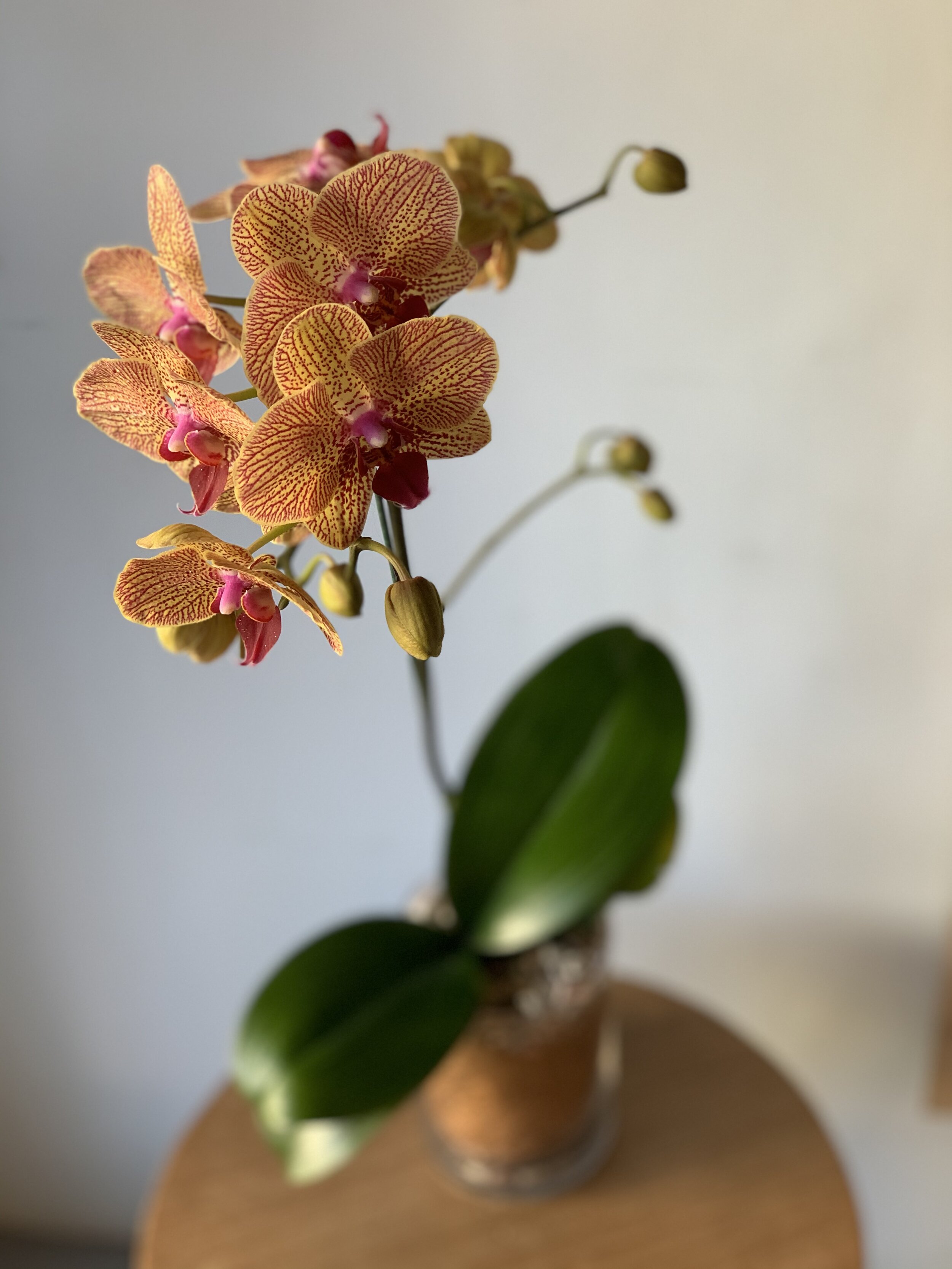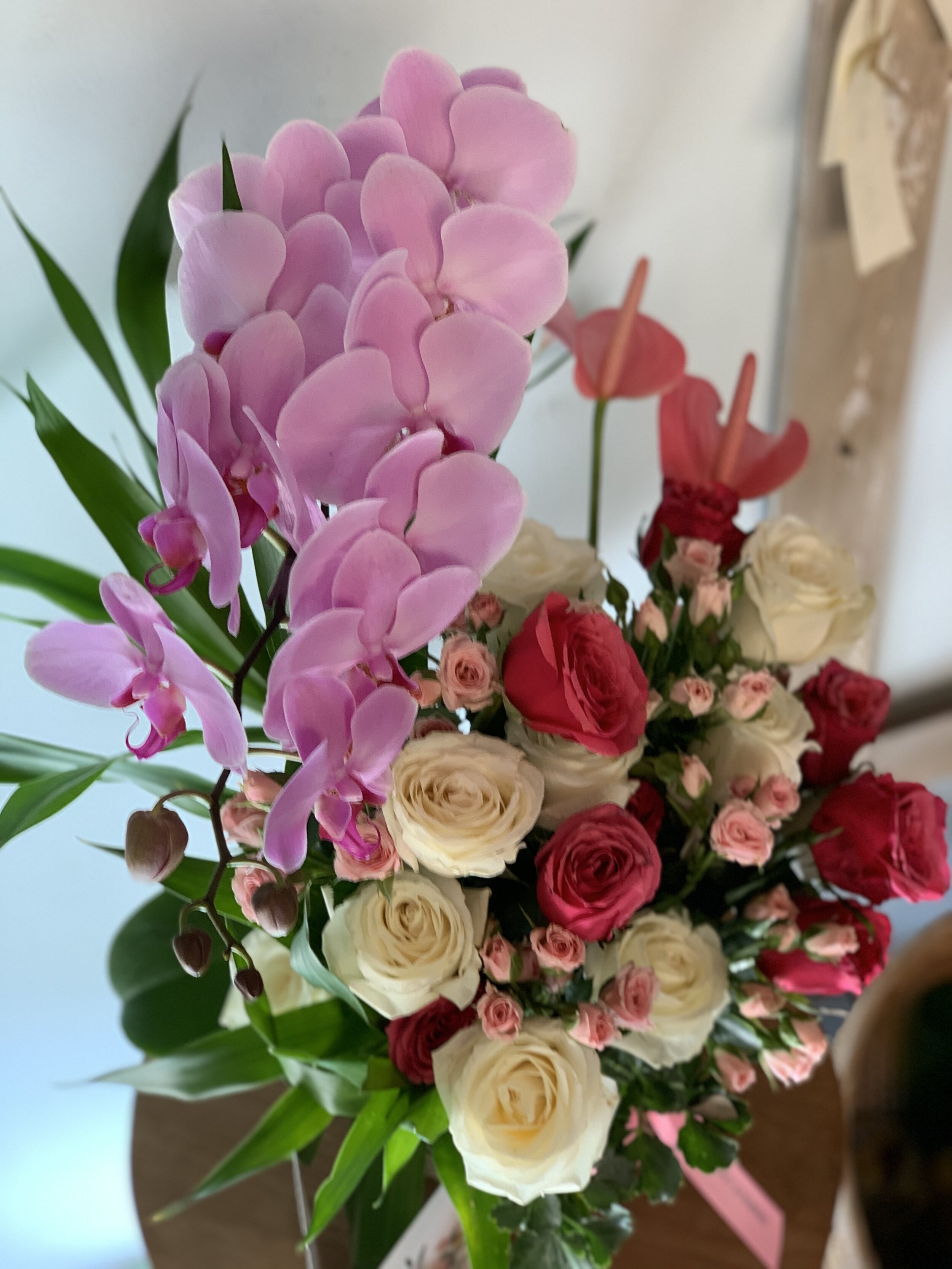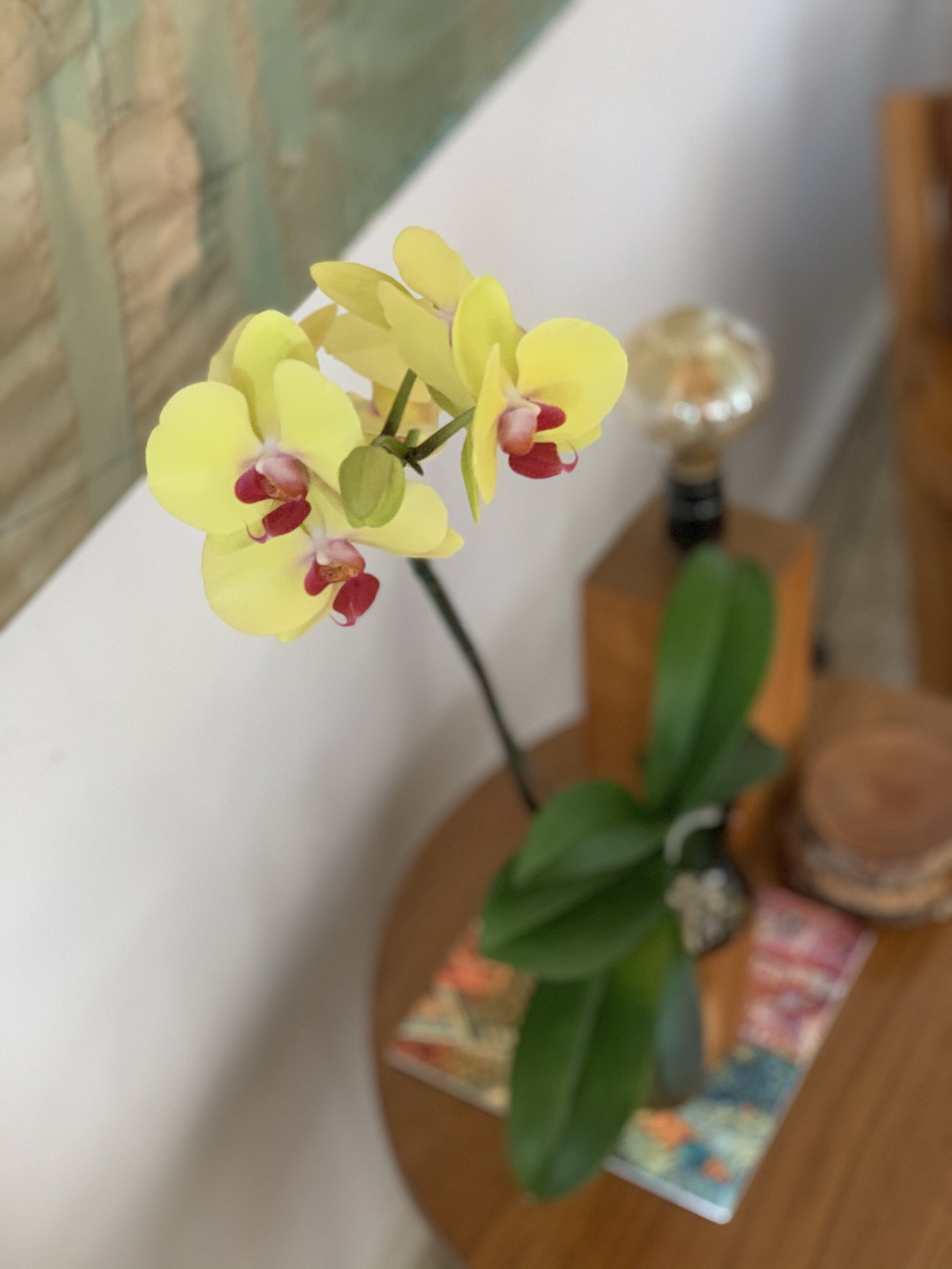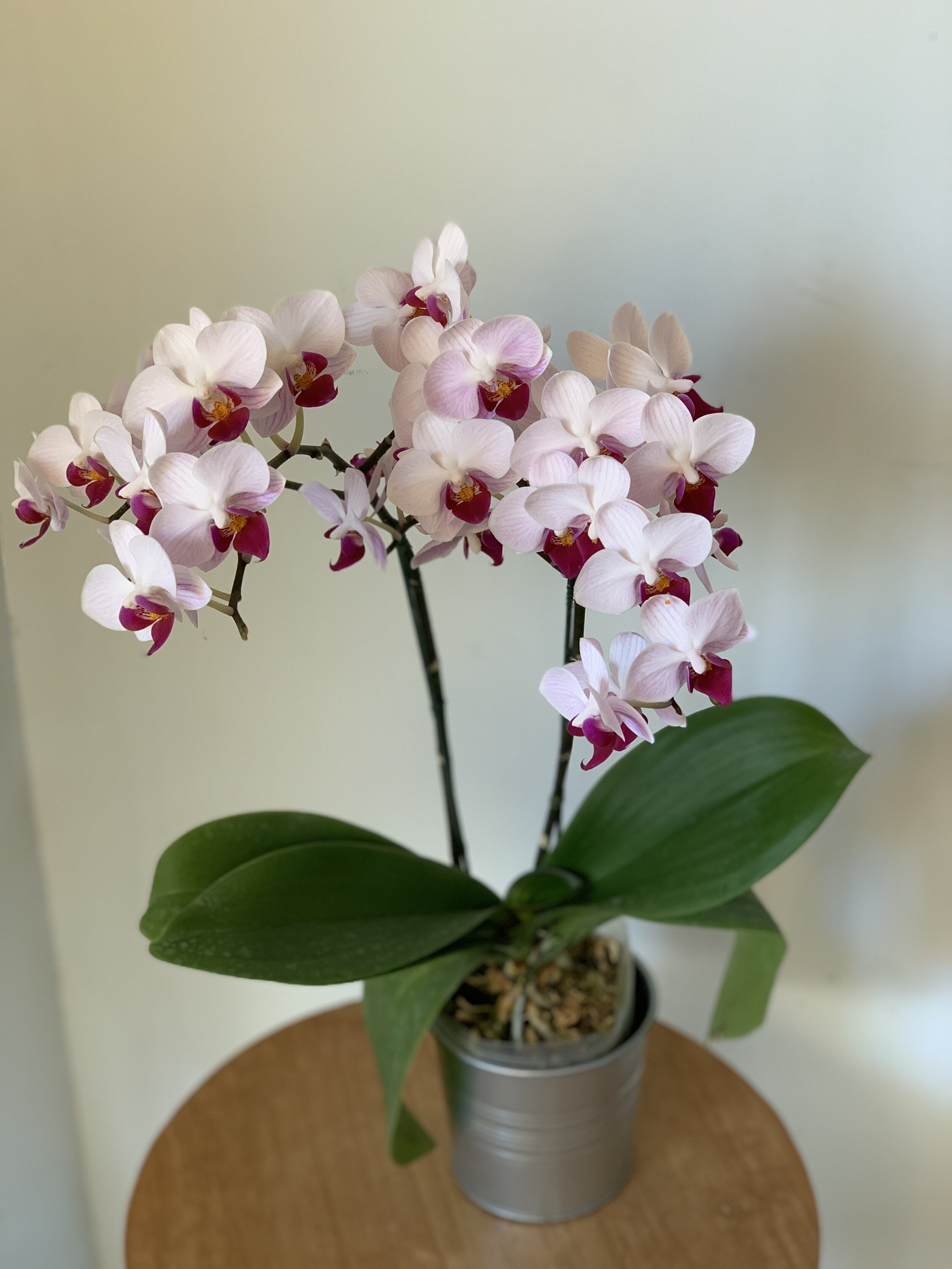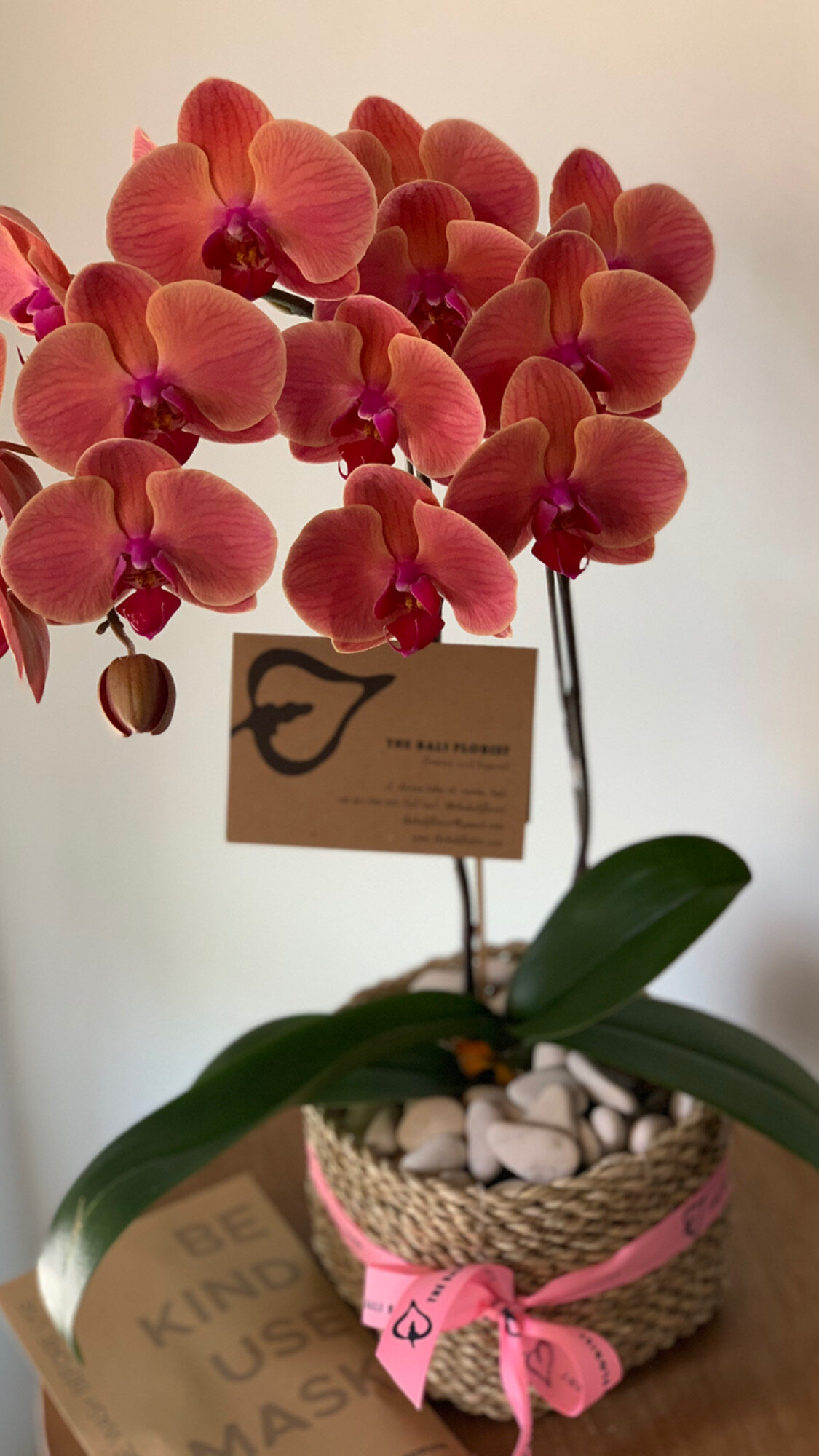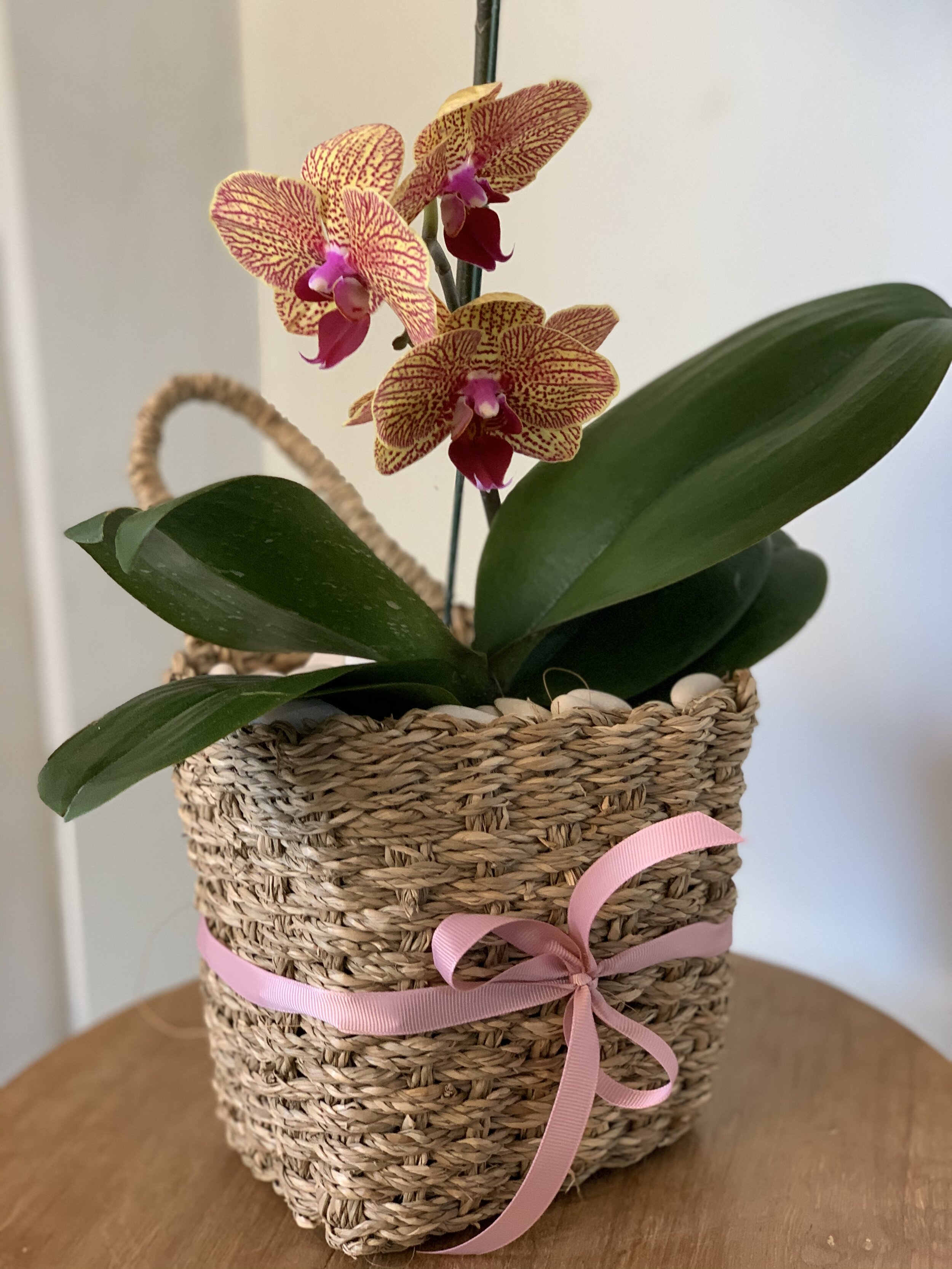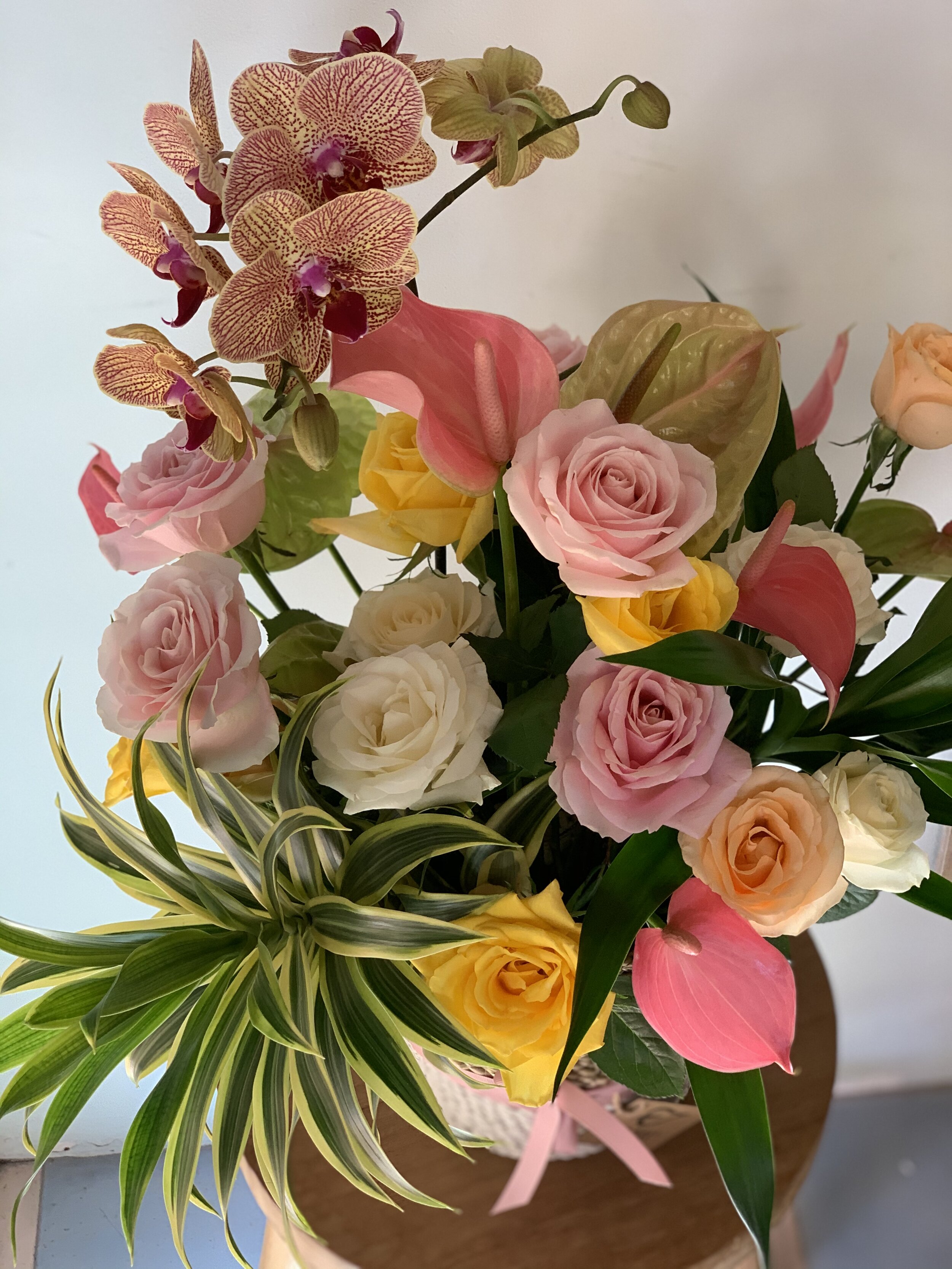Tips on how to care for Phalaenopsis Orchids in the tropical climate
Commonly referred to as the ‘moth orchid’, Phalaenopsis Orchids are one of the longest blooming orchid genera, producing flowers that can last between 1-2 months even in the hot and humid climate like in Bali before dropping or wilting. These orchids are known to bloom 2 to 3 times per year once they have reached a mature size.
How long your orchids lasts really depends on how well it is taken care of. The most beautiful part of the orchid is its blossom, but it can take some time getting used to maintaining it depending on the humidity level of your surrounding environment. Like for many other pretty plants, caring for orchids requires patience and attention towards its needs throughout its entire development.
Commonly referred to as the ‘moth orchid’, the Phalaenopsis Orchid is one of the longest blooming orchid genera, producing flowers that can last from one to two months, even in Bali’s hot and humid climate, before dropping or wilting. These orchids are known to bloom twice or thrice yearly once they have reached a mature size.
How long your orchids last really depends on how well they are taken care of. The orchid’s blossoms are the most beautiful and anticipated aspect of its cultivation, but maintaining its bloom is a process that requires an understanding of the environment’s humidity levels, careful attention towards the plant’s needs throughout its development, and plenty of patience and care.
More About Phalaenopsis
The Phalaenopsis Orchid is the most common orchid as it reproduces easily (hence its ready availability at most nurseries) and blooming plants are available year-round. These orchids are easily grown in the home and stay in bloom much longer than most types of flowers. Unlike other orchids, the Phalaenopsis breed can be repotted anytime, though it is usually best to do so when not in bloom.
The culture of orchids involves indirect light and consistent moisture. Orchids do very well as houseplants and will grow and flower from a moderately bright windowsill. Each year, an orchid plant will grow one or two new leaves. Once the growth phase is complete, a bloom spike will emerge from the stem beneath the second or third leaf from the top. (Tips on how you can encourage regrowth/rebloom of orchid plants are given at the end of the article).
How to Care for the Plant (Orchid Plant)
Provide a mild, warm and somewhat humid environment.
Avoid direct sunlight or constant air conditioning draft as this may cause the leaves and blooms to quickly dry out.
Spray water on the root soil 1-2 times weekly (depending on the humidity of the root condition). If you feel the roots are still moist, avoid overwatering to prevent rotting of the roots.
The ideal surrounding temperature for Phalaenopsis Orchids is between 23 and 25 degrees Celsius.
Treat them with insecticidal soap if you see signs of pests. If the leaves get dusty or dirty from water-mist stains, wipe gently with damp cloth to retain the leaves’ shininess.
Avoid any frictional contact that may bruise or damage the delicate flower. This is especially so when moving the blooms.
How to Care for Cut Orchids?
We sometimes receive bouquet requests that include cut orchids within the arrangement, or entirely of cut orchids. To prolong the cut orchid’s shelf-life, we advise the following tips:
Cut approximately 0.5cm from the end of the stem every 2-3 days.
Place in room-temperature or cold water to keep it fresh (avoid warm water).
A fresh change of water once every two days.
What do we do with the leftover plant? How do we rebloom orchid plants?
Earlier, we said that Phalaenopsis Orchids can bloom two to three times per year in the right conditions. When your orchid plant is not flowering, you may still preserve the rest of the plant as long as their exposed roots and leaves remain healthy. To help prolong the life of the plant and to encourage the regrowth of new flowers (and even a new stem) in tropical climates like what we have in Bali, we have listed several steps to follow:
Keep the existing stem healthy by watering the plant base to prevent it from completely drying out. If the current flower stem has turned brown, leave it as is for the time being as there is a possibility of regrowth from that stem.
Check for any rotting roots and remove them from the plant base.
Check for any leaves which may have turned yellow due to sun over-exposure or overwatering; trim them from the inner core of the plant.
Take the plant out of its decorative container and remove the plastic grower’s pot.
In places like Bali, you can easily find coconut husks or dried coconut shells which have been cut into crescent-shaped pieces. Dried coconut shells are often used as a composting element. Use either coconut husks or one of these dried coconut shells to cover the orchid’s plant base. If coconut shells/husks are not available, dried moss is a good alternative.
Attach the plant onto the bark of a tree with a wide tree branch, such as a frangipani tree, by tying a wire or string around the plant base which has been covered by coconut shell/husk/moss. Other mature trees that can play host to orchid plants include mango trees, large palm trees, and coconut trees.
Attaching the plant onto the tree bark allows the orchid’s roots to slowly latch onto the new host (a symbiotic relationship). This also allows the plant to have a healthier existence in the open air with sufficient humidity. Orchid plants should have enough daily moisture but pay attention not to over-water its roots. The use of coconut shell/husk/moss to cover its base also acts as a natural holder that allows for the drainage of excess water.
Continue watering the plant base two to three times weekly, or as necessary. Touch the roots and feel the level of moisture surrounding it.
In three to four months, you should see new buds starting to appear on the existing stem or new stem.
Sources: Ghia Farms | Joy Us Garden | The Bali Florist



